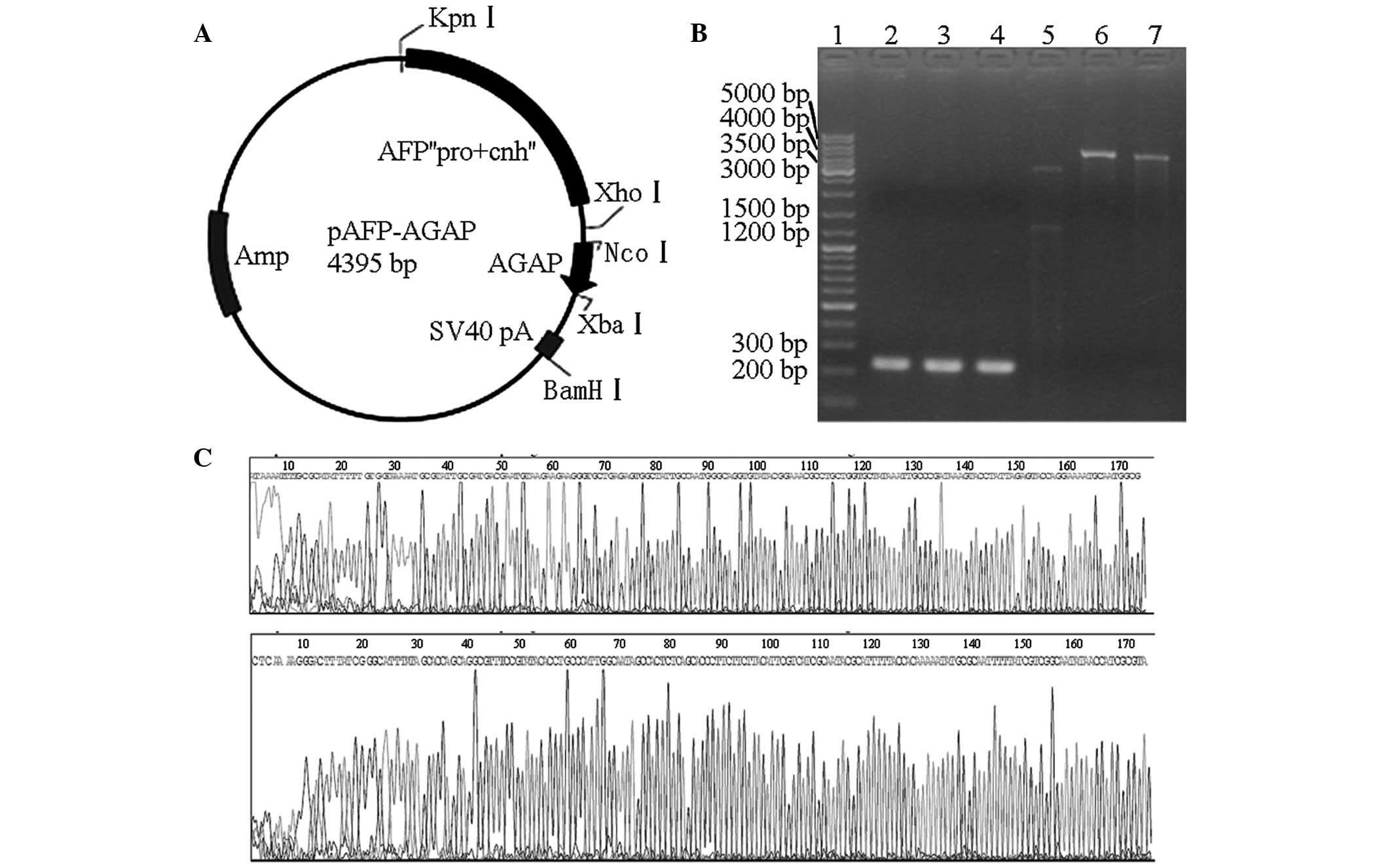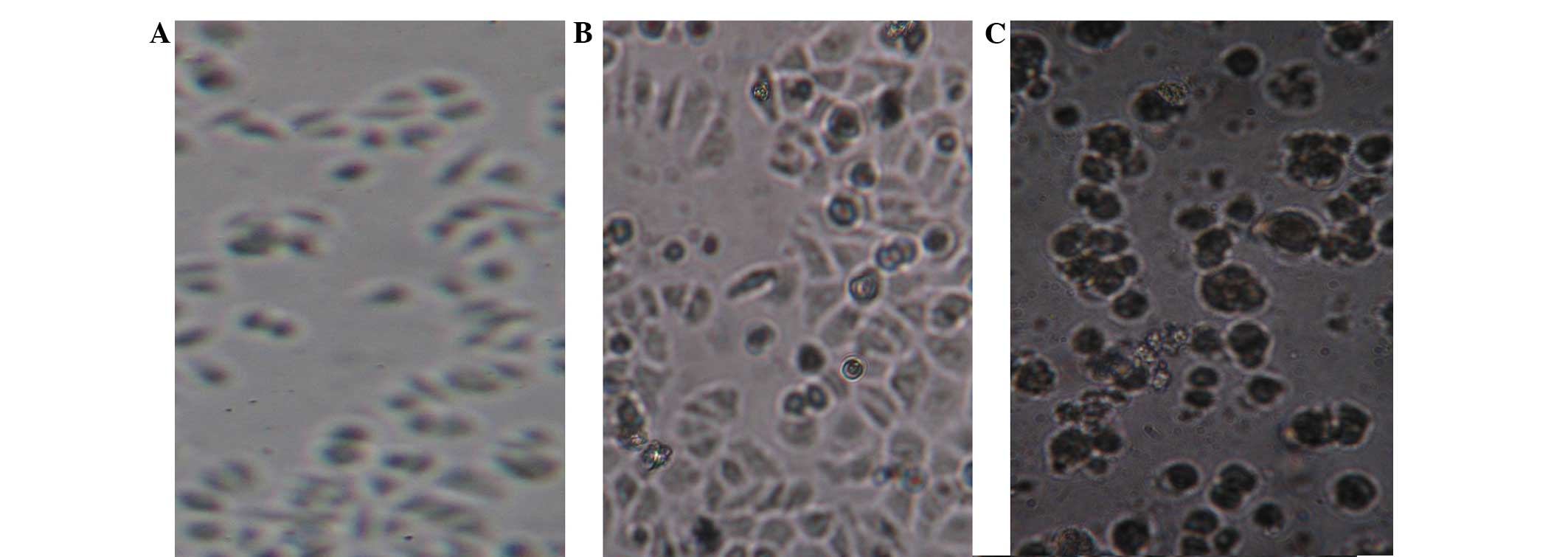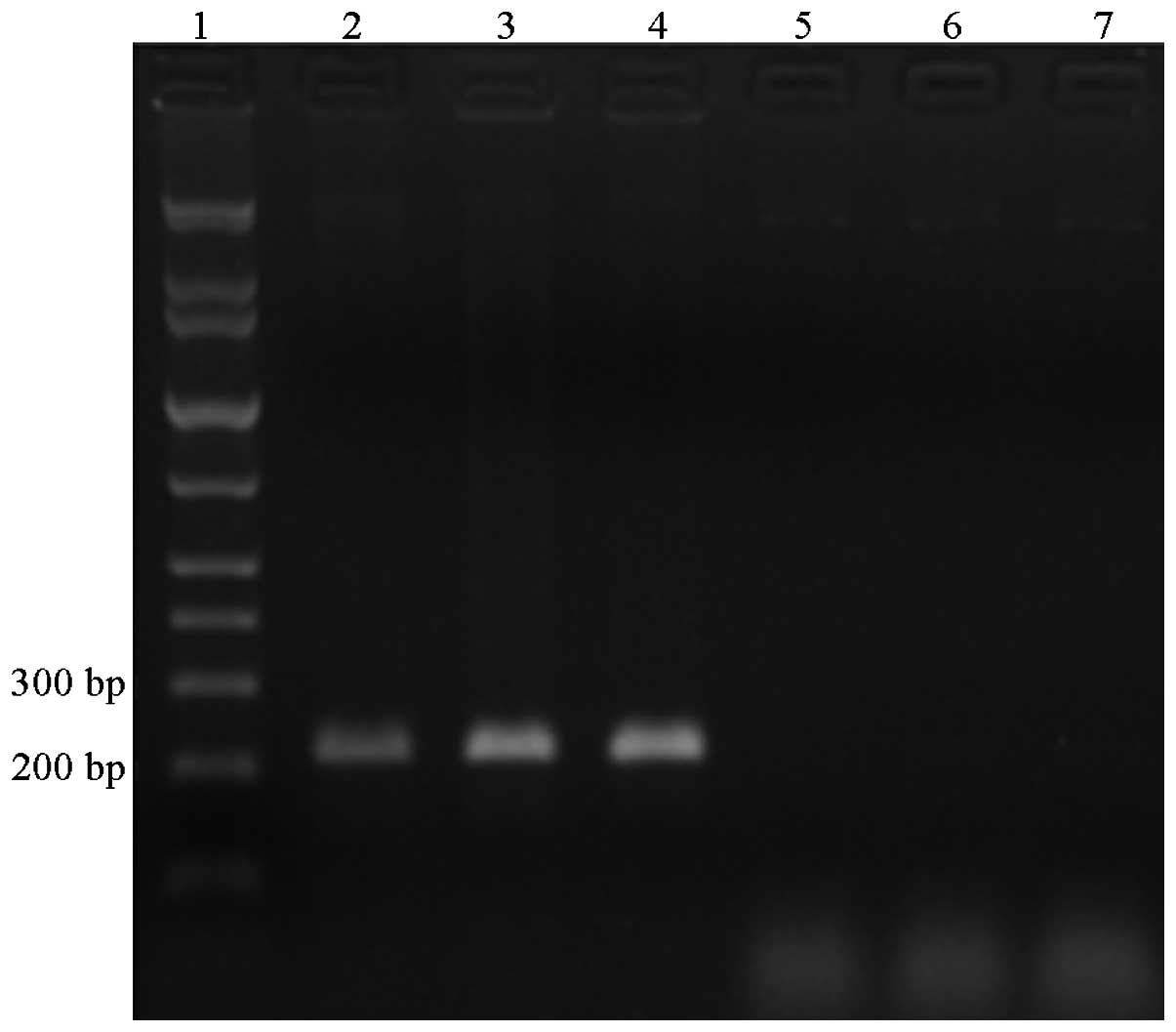|
1
|
Farmer DG and Busuttil RW: The role of
multimodal therapy in the treatment of hepatocellular carcinoma.
Cancer. 73:2669–2670. 1994. View Article : Google Scholar : PubMed/NCBI
|
|
2
|
Levin B and Amos C: Therapy of
unresectable hepatocellular carcinoma. N Engl J Med. 332:1294–1296.
1995. View Article : Google Scholar : PubMed/NCBI
|
|
3
|
Villanueva A and Llovet JM: Targeted
therapies for hepatocellular carcinoma. Gastroenterology.
140:1410–1426. 2011. View Article : Google Scholar : PubMed/NCBI
|
|
4
|
Gutierrez AA, Lemoine NR and Sikora K:
Gene therapy for cancer. Lancet. 339:715–721. 1992. View Article : Google Scholar : PubMed/NCBI
|
|
5
|
Liu YF, Hu J, Zhang JH, Wang SL and Wu CF:
Isolation purification, and N-terminal partial sequence of an
antitumoral peptide from the venom of the Chinese scorpion Buthus
martensii Karsch. Prep Biochem Biotechnol. 32:317–327. 2002.
View Article : Google Scholar : PubMed/NCBI
|
|
6
|
Abelev GI: Alpha-fetoprotein in
ontogenesis and its association with malignant. Adv Cancer Res.
14:295–358. 1971. View Article : Google Scholar
|
|
7
|
Kang JH, Toita R and Murata M: Liver
cell-targeted delivery of therapeutic molecules. Crit Rev
Biotechnol. Jul 15–2014.(Epub ahead of print). View Article : Google Scholar : PubMed/NCBI
|
|
8
|
Li W, Li DM, Chen K, et al: Development of
a gene therapy strategy to target hepatocellular carcinoma based
inhibition of protein phosphatase 2A using the α-fetoprotein
promoter enhancer and pgk promoter: an in vitro and in vivo study.
BMC Cancer. 12:5472012. View Article : Google Scholar
|
|
9
|
Moolten FL: Drug sensitivity (‘suicide’)
genes for selective cancer chemotherapy. Cancer Gene Ther.
1:279–287. 1994.PubMed/NCBI
|
|
10
|
Hu Y, Shen Y, Ji B, et al: Liver-specific
gene therapy of hepatocellular carcinoma by targeting human
telomerase reverse transcriptase with pegylated
immuno-lipopolyplexes. Eur J Pharm Biopharm. 78:320–325. 2011.
View Article : Google Scholar : PubMed/NCBI
|
|
11
|
Gaun M, Rodriguez-Madoz JR, Alzuguren P,
et al: Increased efficacy and safety in the treatment of
experimental liver cancer with a novel adenovirus-alphavirus hybrid
vector. Cancer Res. 66:1620–1629. 2006. View Article : Google Scholar
|
|
12
|
Tan YH and Guo JS: Research advances in
chemical component and analgesic effect of Buthus martensii Karsch.
Hunan Zhong Yi Yao Daobao. 7:210–212. 2001.
|
|
13
|
Zhou XH, Yang D, Zhang JH, Liu CM and Lei
KJ: Purification and N-terminal partial sequence of anti-epilepsy
peptide from venom of the scorpion Buthus martensii Karsch. Biochem
J. 257:509–517. 1989.PubMed/NCBI
|
|
14
|
Gu Y, Liu SL, Ju WZ, Li CY and Cao P:
Analgesic-antitumor peptide induces apoptosis and inhibits the
proliferation of SW480 human colon cancer cells. Oncol Lett.
5:483–488. 2013.PubMed/NCBI
|
|
15
|
Mao Q, Ruan J, Cai X, et al:
Antinociceptive effects of analgesic-antitumor peptide (AGAP), a
neurotoxin from the scorpion Buthus martensii Karsch, on
formalin-induced inflammatory pain through a mitogen-activated
protein kinases-dependent mechanism in mice. PLoS One.
8:e782392013. View Article : Google Scholar : PubMed/NCBI
|
|
16
|
Tilghman SM: The structure and regulation
of the alpha-fetoprotein and albumin genes. Oxf Surv Eukaryot
Genes. 2:160–206. 1985.PubMed/NCBI
|
|
17
|
Selten GC, Princen HM, Selten-Versteegen
AM, Mol-Backx GP and Yap SH: Sequence content of alpha-fetoprotein,
albumin and fibrinogen polypeptide mRNAs in different organs,
developing tissues and in liver during carcinogenesis in rats.
Biochim Biophys Acta. 699:131–137. 1982. View Article : Google Scholar : PubMed/NCBI
|
|
18
|
Marrero JA, Su GL, Wei W, et al: Des-gamma
carboxyprothrombin can differentiate hepatocellular carcinoma from
nonmalignant chronic liver disease in American patients.
Hepatology. 37:1114–1121. 2003. View Article : Google Scholar : PubMed/NCBI
|
|
19
|
Wu L, Matherly J, Smallwood A, Adams JY,
Billick E, Belldegrun A and Carey M: Chimeric PSA enhancers exhibit
augmented activity in prostate cancer gene therapy vectors. Gene
Ther. 8:1416–1426. 2001. View Article : Google Scholar : PubMed/NCBI
|
|
20
|
Parr MJ, Manome Y, Tanaka T, Wen P, Kufe
DW, Kaelin WG Jr and Fine HA: Tumor-selective transgene expression
in vivo mediated by an E2F-responsive adenoviral vector. Nat Med.
3:1145–1149. 1997. View Article : Google Scholar : PubMed/NCBI
|
|
21
|
Huang TG, Savontaus MJ, Shinozaki K,
Sauter BV and Woo SL: Telomerase-dependent oncolytic adenovirus for
cancer treatment. Gene Ther. 10:1241–1247. 2003. View Article : Google Scholar : PubMed/NCBI
|

















